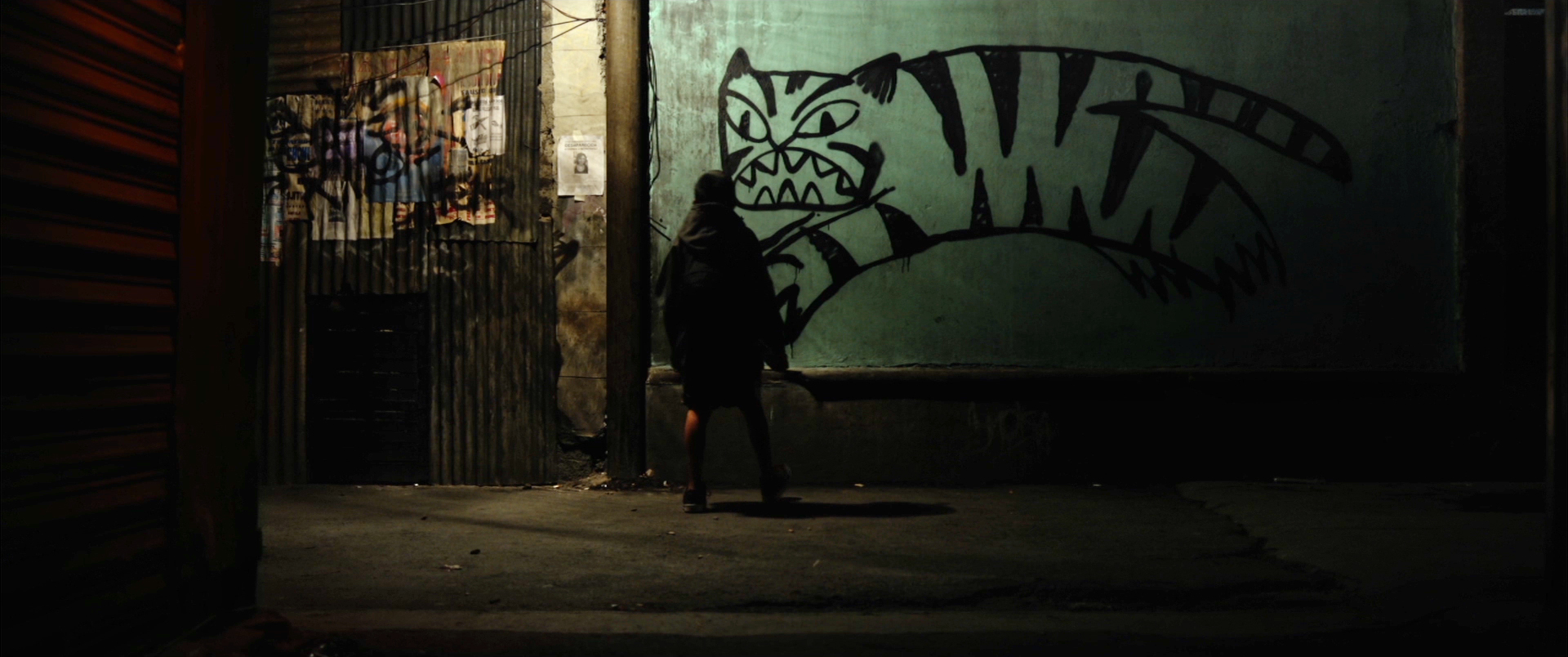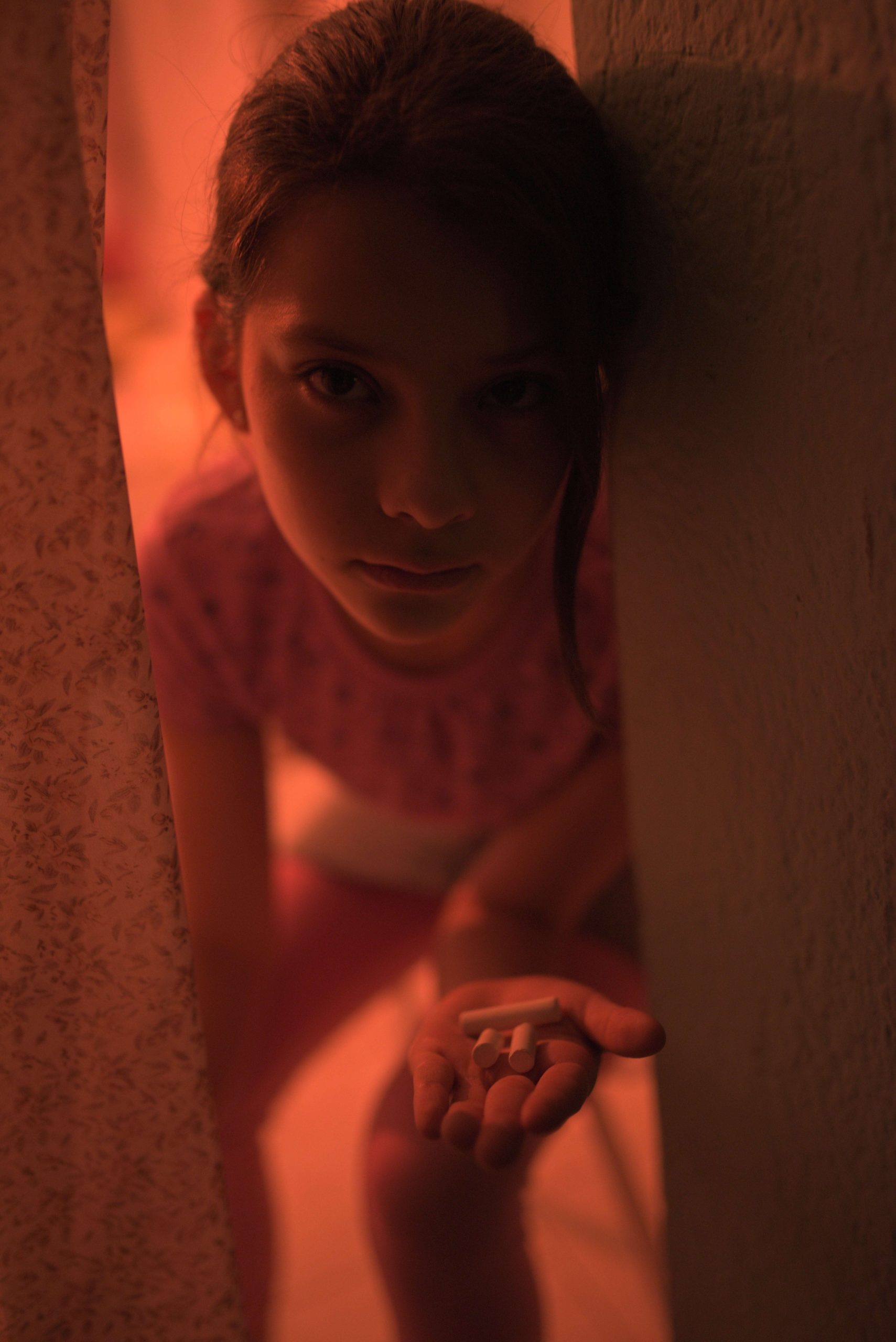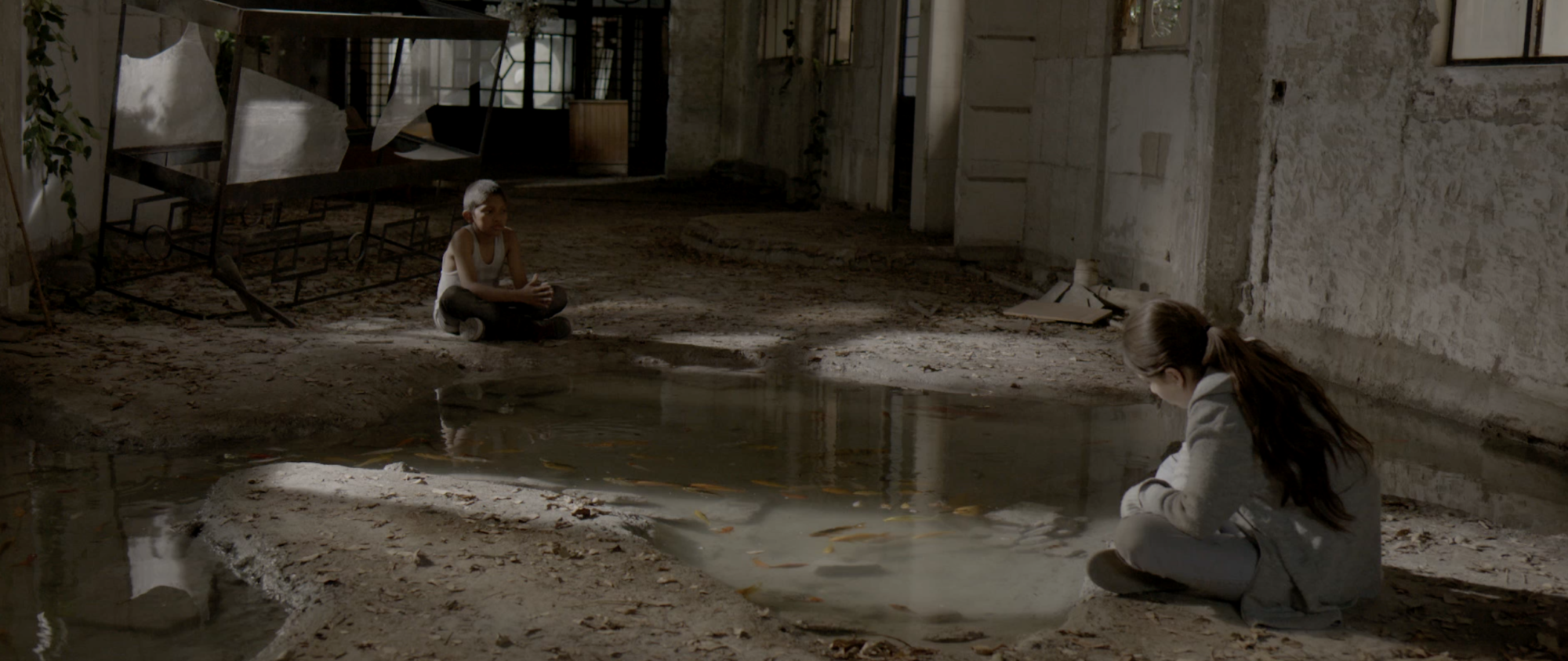Tigers Are Not Afraid (Vuelven)

Tigers Are Not Afraid (still) [courtesy of Shudder]
Share:
“There are no wishes. There’s nothing. Not even tigers. We’re all there is.”
Tigers Are Not Afraid is a gritty work of magical realism, a dark story heavy with references to folklore and supernatural beings—but this fantasy is more nightmare than fairytale. From established screenwriter and rising-star director Issa López, Tigers tackles subjects including child homelessness and displacement, political corruption, gender violence, and generational trauma. It incorporates elements of a standard thriller, but its strange details, subliminal messaging, and timeliness make Tigers more suited to the art world than to mainstream moviegoers.
The plot moves quickly, and the pace is accentuated by shaky camera movements and largely improvised dialogue. Estrella, age 11, lives in an unnamed cartel-dominated town in present-day Mexico. Near the start of the film she survives a school shooting, during which her teacher gives her three pieces of chalk and tells her that each piece has the power to grant a wish. Estrella then returns home to find her mother gone. As days go by and her mother doesn’t reappear, Estrella becomes increasingly hungry. She leaves her home and joins a group of similarly orphaned young boys, whose unofficial leader, Shine, is being hunted by prominent cartel member Caco, whose cellphone and gun the youngster has stolen. Shine refuses to let Estrella join the tight group unless she agrees to kill Caco—a seemingly impossible task. She agrees, but after sneaking into Caco’s house with the stolen gun in hand, she finds him already dead. Estrella then rescues a small group of children held in cages, takes credit for Caco’s death, and the whole group goes on the run as word of her actions quickly spreads throughout town. All the children quickly find themselves in increasingly dire and complex situations as their means of survival dwindle.
Trauma and death—and particularly violent death—have a strong symbolic presence in Tigers. Early in the movie, after Estrella sees a dead body on her way home from school, she is followed by a mobile trail of blood signaling not only the common occurrence of murder in her town but also the lingering effect of traumatic experiences. The blood trail moves snake-like through the streets, and it continues to follow her off and on throughout the film. We are keenly aware of the cartel—specifically known as the Huascas—and that their power extends deep into the community, but the violence is depicted from a child’s perspective. Nightmarishly, there aren’t explanations for the on-screen and implied off-screen murders, but the danger and desperation of the situation are clearly evident. The original Spanish title of the film, Vuelven, translates to “They Return,” and “they” could refer to the cartel members who are committed to tracking down the kids, or to ghosts of the murdered who return to haunt them. Estrella uses her first wish to bring her mother back, which results in a horrendous summoning of the dead woman’s bloodied body. Her mother—along with an increasing number of the restless dead—haunts Estrella and pushes her to “bring him to us,” referring to the head of the cartel’s human trafficking operation (who is also a rising politician in the town). Children die, and almost immediately reappear as apparitions to stand over their own bodies. Even in death, no one is at peace.
The film has been heavily and easily compared to Guillermo del Toro’s Pan’s Labyrinth (Del Toro, for the record, is a vocal fan of Tigers). Although Del Toro’s film is set in early Francoist Spain and López’s in contemporary Mexico, the styles and themes of the films overlap. Both films incorporate elements of magical realism and traditional fairytales, and both portray death not just as an inevitability to avoid but also as part of daily life. Ofelia in Pan’s Labyrinth, however, seeks out the magical realm, at least in part, as a way of escaping her fraught reality. Estrella, in contrast, is just as intent on escaping her ghosts—and all things magical—as on eluding the cartel. When Shine asks if she could use her final wish to remove a scar from his cheek, she refuses with the explanation, “Every time I make a wish, something really bad happens.”
Although Tigers is horrifying, it’s not exactly a horror film. There are jump-scare moments (usually elicited by zombie mom and company), but they function more to scare the film’s protagonists rather than the audience. There are also scenes of the children’s creativity—they stage a mock talent show, decorate abandoned soccer balls, and invent games. When they’re not actively running for their lives, they goof off, get bored, rag on each other. The most disturbing moments occur when they face head-on the harsh reality of their situation. On the phone stolen from a cartel member, Shine and Estrella discover a video of Estrella’s mother’s torture and murder. Children are shot to death. Such content is alarming, but carefully it avoids shock-value exploitation; López shies from violence for its own sake. Between moments of brutality and subsequent trauma, the main characters’ isolation and hopelessness relentlessly builds. At one point, Shine observes, “There are no wishes. There’s nothing. Not even tigers. We’re all there is.”
The special effects in Tigers are worth noting—not for their high quality but for the unnerving way they propel the story. The effects are admittedly low budget, but their grittiness is memorable, and López finds ways to make this limitation work to the film’s advantage. What they lack in literal realism is made up for in their surreal and unnerving peculiarity, which adds a child-like strangeness to the apparitions, as if the creatures are coming directly from the imaginations of the characters. Many of the animated effects emerge from the children’s wall drawings, and there’s a recurring theme of drawing reality to make sense of it. When tragedy strikes, Shine creates a charcoal mural depicting not the horrific events but the grief-ridden aftermath. Drawings, and the resulting illusions, become a way of processing.
Tigers was filmed in 2015—before the election of Donald Trump and the subsequent border policy of family separation—and released in Mexico in 2017, at the height of the #MeToo movement. In a time when women filmmakers are, for the first time, beginning to receive long-deserved recognition, López’s role as a successful woman director is not insignificant. However, despite positive critical reception, the film never quite went mainstream outside Mexico. In the United States, the limited-release film seemed to leave art-house theaters as soon as it arrived.
Tigers seems to have quietly touched a nerve worldwide—albeit in somewhat niche circles. In an interview with NPR, López speaks about how many of the themes in Tigers—gender-specific brutality, corruption, upheaval—resonate on an international scale. Tigers is certainly specific to contemporary Mexico, where it has received the most attention and acclaim, but at times the film feels eerily placeless and timeless. Perhaps that’s why it never quite took off on a wider scale—its unfiltered gaze is too direct, gritty, nihilistic. Shine and Estrella draw their stories—all their hope and despair—in chalk and charcoal and watch them come to life.
EC Flamming is a writer living in Atlanta. She has written for BURNAWAY, ArtsAtl, Paste, and has a forthcoming piece in Another Gaze. She subscribes to Film Comment, Playboy, and People.

